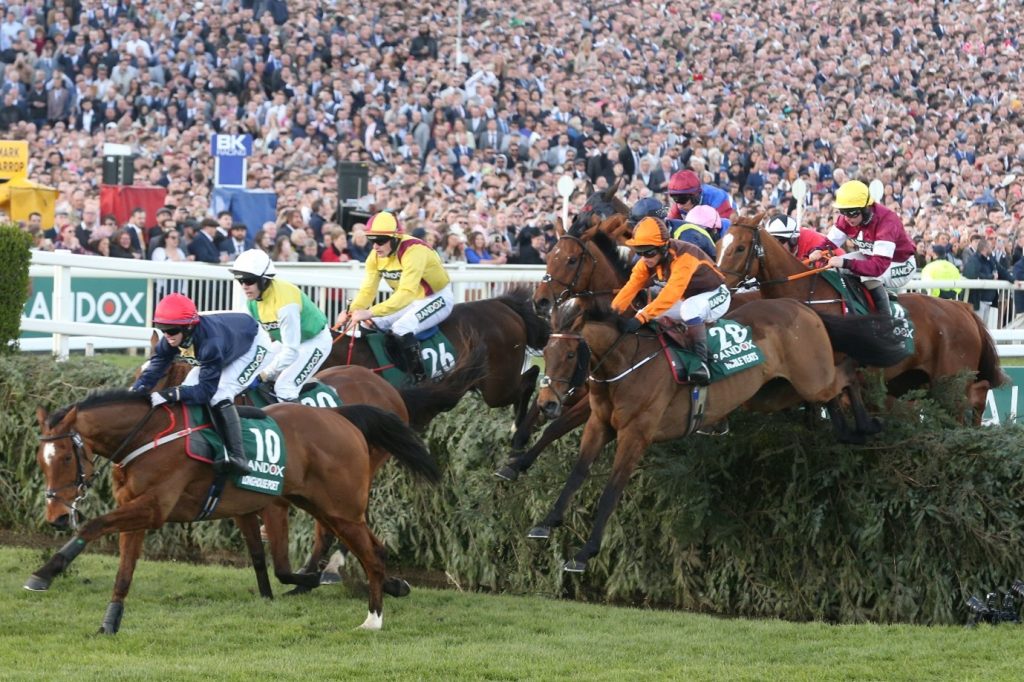The Grand National at Aintree Racecourse is not only a highlight of the British sporting calendar but also a focal point for horse race betting enthusiasts. The Grand National has enduring appeal, partly due to its challenging course, featuring a series of iconic fences that test the mettle of both horse and rider.
In this article, we guide you through some of the toughest tests the favourites can expect at this year’s Grand National.
Becher’s Brook
Perhaps the most renowned of all, Becher’s Brook stands at 4 feet 10 inches high and spans 7 feet 6 inches in width.
Named after Captain Martin Becher, who famously fell here during the inaugural Grand National in 1839, the fence is notorious for its deceptive drop on the landing side, which has been modified over the years to enhance safety.
Despite these changes by the race’s organisers, it remains a formidable obstacle that has unseated many competitors.
The Chair
As the tallest fence on the course, The Chair measures 5 feet 2 inches in height and features a 5-foot-wide ditch on the take-off side.
Positioned directly in front of the grandstand, it offers spectators a prime view of the action. The landing side is elevated, requiring precise timing and skill from jockeys to navigate successfully.
Its imposing stature and unique construction make it one of the most respected fences in the racing world.
Canal Turn
This 5-foot-high fence is distinguished by the sharp 90-degree left-hand turn immediately following the jump, directing horses alongside the Leeds and Liverpool Canal.
The abrupt change in direction demands agility and coordination, often leading to congestion and falls, especially in the crowded early stages of the race.
Mastering the Canal Turn is crucial for any contender aiming for Grand National glory.
Valentine’s Brook
Similar in height to Becher’s Brook at 5 feet, Valentine’s Brook includes a ditch on the take-off side. Its name originates from a horse named Valentine, reputed to have jumped the fence hind legs first in 1840.
While less notorious than some of its counterparts, it still presents a significant challenge, with its combination of height and ditch requiring both horse and rider to be at their best.
Foinavon Fence
Standing at 4 feet 6 inches, this otherwise unremarkable fence gained fame during the 1967 Grand National. A massive pile-up occurred, and Foinavon was the only horse to clear it on the first attempt, leading to an unexpected victory.
This incident has cemented the fence’s place in Grand National lore, serving as a reminder of the race’s unpredictability.
Water jump
Unrecognisable from when it was first introduced as a 16-foot-wide stone wall in 1851, the water jump wraps up the first circuit of the Grand National and is just 2 foot 6 inches high.
Open ditch
The 5-foot-high, 10-foot-spread open ditch is notorious in Grand National folklore as the fence Golden Miller refused to jump back in 1935.
The iconic horse was attempting to defend his crown after becoming the first, and still to this day only, horse to win both the Grand National and Gold Cup in the same season.
1st and 17th fence
Despite being just 4 feet, six inches high, the first fence—which also acts at the 17th—is notorious for bringing down runners at the start of the Grand National, mainly due to keenness and high travelling speeds.
To prevent this, the obstacle was brought 60 yards closer last year to reduce the field’s speed.
Opposition the Embankment, roughly 13,000 spectators vie for a spot on the grassy verge to catch an early glimpse of the action or to see how their runner is getting on at the halfway stage.
—
These fences contribute to the unique character of the Grand National, offering a blend of history, challenge, and excitement that continues to captivate audiences and participants alike.



